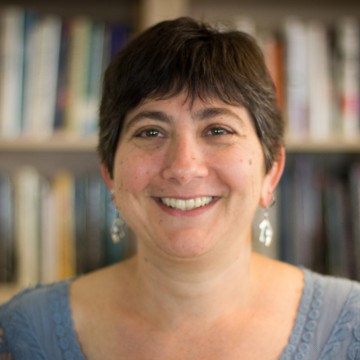Posted in Power, Equity, Inclusion
December 10, 2018
What makes a fire burn
is space between the logs,
a breathing space.
Too much of a good thing,
too many logs
packed in too tight
can douse the flames
almost as surely
as a pail of water would.
So building fires
requires attention
to the spaces in between,
as much as to the wood.
When we are able to build
open spaces
in the same way
we have learned
to pile on the logs,
then we can come to see how
it is fuel, and absence of the fuel
together, that make fire possible. …
A fire
grows
simply because the space is there,
with openings
in which the flame
that knows just how it wants to burn
can find its way.
– “Fire,” Judy Sorum Brown
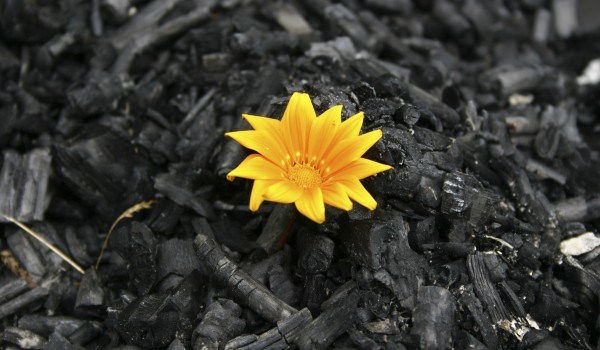
Change does not tend to happen through piling on, through simply adding to what we are already doing or whatever heap we have in front of us.
Change happens, say scientists and sages, through some kind of release, through letting go. Not of everything, but of something. Something that will create enough space for creativity (something else!) to happen.
Changing the way we do work, behave, and treat one another and the planet doesn’t mean dumping new techniques on top of old ways of working. It means carving out creative niches that are given space for the breath of life to reach them. So they can grow. So that they can find their way.
Change does not tend to happen in isolation (the proof of re-treat is ultimately in re-engagement). It happens through connection, through webs (no one is an island). It happens through collective care and nurturing. Too much space – distance, disconnection – can kill the spark of change.
Sharon Salzberg and Ethan Nichtern ask an important question –
“What are we holding onto about this system [ways of doing and being] that, if we trusted the other people around us, we actually could practice letting go of?”
Connection, deep connection, also helps us to let go. … And to let something else come.
Connect. Let go. Create space. Connect. Let come.
Like breathing.
How are you connecting (and to what and to whom) in order to let go of what no longer serves?
What are you letting go of in order to create spaces for the new and desperately needed?
What new connections (and old) are you making to fuel the fires of possibility?
December 3, 2018
“Scarcity alters how we look at things; it makes us choose differently; … our single-mindedness leads us to neglect things we actually value.”
-Sendhil Mullainathan and Eldar Shafir, Scarcity: The New Science of Having Less and How It Defines Our Lives

Image by geckzilla, shared under provisions of Creative Commons Attribution License 2.0.
A few weeks ago, the inimitable Seth Godin wrote a blog post about “the magnetic generosity of the network effect.” In the post, he talks about how a “scarcity mindset” can impact our willingness to share ideas. This can happen, says Seth, when we treat ideas as if we were sharing a pizza. But ideas are not pizza slices. Ideas can grow, inspire, flourish. Ideas when offered freely can give birth to innovation; in dialogue they can create even better ideas. The exchange of ideas can grow energy and enthusiasm among sharers and recipients. This is central to the notion of “network effect” – as a network grows, so does the potential of the network. It’s potential grows. Having connections is only as good as what gets shared through those connections, and in which directions. In other words, networks are made valuable not just through connectivity, but through generosity and mutuality.
I work with some groups, aspiring to be networks for change, that struggle with what I would call an “organizational mindset” in their work. Their tendency is to want to immediately put structure and boundaries on what they are doing – who is in, who is out; how we will make decisions; what committees need to be formed, who has what kind of power, etc. This is not necessarily a bad thing, except when it is driven by a scarcity mindset, an overly protectionist stance that can result in the hoarding and unwillingness to share things that are not scarce – ideas, appreciation, a skill, gratitude, love, an image, a tune – and whose sharing can create the richness of emergence and greater abundance. Read More
September 5, 2018
IISC exists to bring the best of collaborative practice to the work of social justice and sustainability. In the early years, some of our detractors felt we were too apolitical, that our call to “get the whole system in the room” was naïve at best and dangerous at worst. Without a power analysis, collaboration across traditional lines of authority, role and identity was of limited interest to some of the organizers and activists we knew. Collaboration might be a good idea for the allies, they thought, but it was silly to think that bringing the power brokers or counterproductive actors in the system into the room with those most affected would lead to meaningful results. That was the early and mid 1990s.
In some ways, our critics were right and we knew it. By the late 1990s, we began to bring diversity and cultural competency explicitly into our framework. After all, collaboration is about working together, and working together across race, class, culture, and role are part and parcel of that kind of work. We stretched our core methodology. We expanded the boundaries of cultural competency to include understanding historic and present-day structural dynamics of oppression and taking action to address structural factors. By the early 2000s we were crystalizing an understanding of power, network theory, and love as critical dimensions of collaboration. Since the late 2000s, we’ve been building tools and methods to bring power, equity, and inclusion into the center of our practice. The next stage of this evolving practice has been an increasingly sharp focus on racial justice in particular, to the point where the pursuit of racial equity is part of our stated mission. And, I’m excited to see how many people see the value of bringing that enriched understanding of collaborative practice to their work for racial justice. At the same time, I’m struck by the continuing importance of protest and civil disobedience to the pursuit of justice.
In this particular moment brings a question into sharp relief in this particular moment. When is it necessary to completely disrupt life or business as usual in order to shine a light on injustices and pursue justice? Can that kind of disruption be done in a collaborative way? What’s the role for confrontation?
I am indebted to Linda Stout and her colleagues at Spirit in Action for their 4Rs approach to social change. They recognize that there are times for Resisting violations of shared values and human rights; Reforming existing systems; Reimagining alternative futures; and Reinventing communities, organizations, and societies from the ground up to reflect the kinds of values we hold dear. If ever there was a time to resist, it’s now. And those who are resisting courageously in ways large and small need spaces of refuge and restoration. It’s exhausting and dangerous work. Reimagining is often led by artists, and the movie Black Panther highlighted the power of reimagining alternative futures. I think that much of our work centers on reforming existing systems, supporting people who are working to transform their institutions from the inside out. And, in a few cases, there are genuine efforts to focus energy and attention on recreating ways of being and doing together that bring the imagined future into reality.
I’ve been sensing a growing desire for a lot more reimagining and recreating. What’s the mix in your work and your world?
August 24, 2018
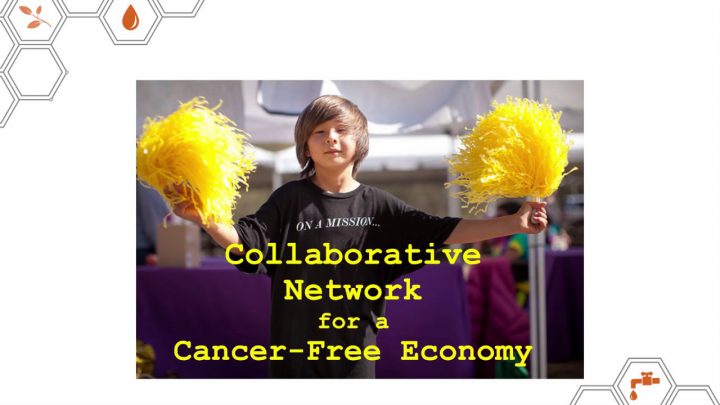
This post originally appeared on the Health and Environmental Funders Network website. It was co-authored by Fred Brown, The Forbes Funds, President & CEO; Debra Erenberg, Cancer Free Economy Network, Strategic Director; and Ruth Rominger, Garfield Foundation, Director, Collaborative Networks Program. IISC was centrally involved with the launch of the Cancer Free Economy Network, serving as lead process designer, facilitator and network coach from 2014-2017. IISC is currently supporting the development of CFEN’s network strategy.
We can do this! Within the philanthropy sector, there are so many solutions emerging around the world from people coming together to tackle the social, economic and environmental problems challenging humanity right now. We are in a time when connecting solutions together to align and reinforce each others’ progress is the most critical strategy across issue silos.
The Cancer Free Economy Network (CFEN) is one such example, where people with solutions — good ideas, strategies, initiatives, expertise, models, products and passion — are collaborating to build an economy that supports health and well being for all. These types of social change networks are held together with universal core values. In CFEN, the values are framed as simply as:
The water we drink, the air we breathe, and the products we use every day shouldn’t make us sick, cause cancer or any other disease.
The network is an open and flexible way to connect to an extended community of people who are building power together to phase out all toxic chemicals manufactured and put into industrial and consumer products that are making us sick and damaging our environment. Collectively, we know of many solutions that are readily available for moving the economy in that direction.
Like many social change networks that take a holistic, collaborative approach, people come together to connect and multiply actions aimed at shifting mindsets, structures and behaviors in many different aspects of the complex problem.
In the case of CFEN, this means there are teams from many organizations coordinating a variety of actions around toxics that together will:
-
Change the Story to show how we can prevent many cancers by addressing the toxic chemicals that are currently accepted as part of our environment.
-
Advance the science supporting health and preventing illness.
-
Shift the market from toxic chemicals to a market producing safe, healthy, and affordable materials.
-
Build the power to implement system changes across diverse constituencies.
Read More
July 18, 2018
This is a repost of a fourth in a series of postings written by former IISC Senior Associate Linda Guinee about power and group facilitation processes, based on research she completed a number of years ago. Today’s post is about how power is built into group narrative. Also check out these other posts on power: “What is Power Anyway?” “Power Dynamics: The Hidden Element to Effective Meetings“
As I was doing research, I came across a batch of work about narrative theory by Sara Cobb and Janet Rifkin (cited below). Cobb and Rifkin researched how a narrative is constructed and what impact it has on the ultimate outcome of mediation sessions. They found that the first story told tends to be privileged and “colonize” later stories told. By framing the discussion to come, this initial story tends to narrow and define the direction of the ensuing conversation. Later versions are generally tied to the initial story and thus are unable to be fully developed. And the outcome of mediation is generally tied to the initial story.
This can also play a role in group facilitation. If the first version told in a group becomes the frame under which all other discussion happens, a facilitator must pay attention to who tells the first story – or to how to reinforce different versions. Read More
July 12, 2018
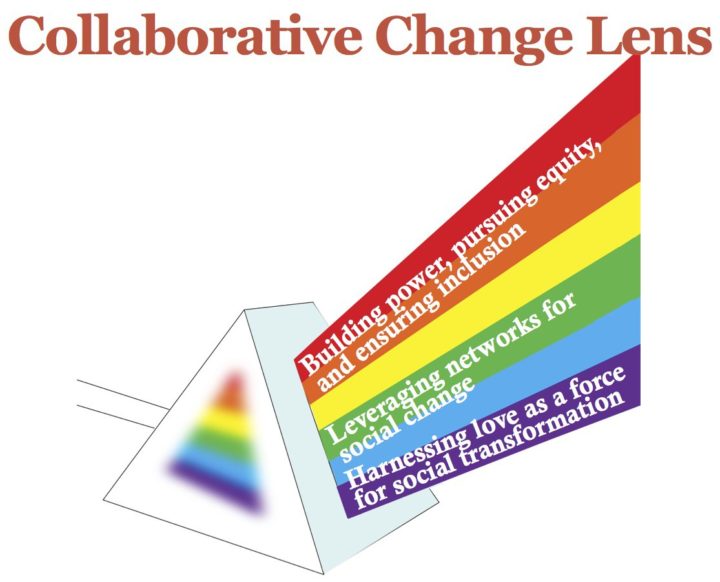
Building on the theme of our recent blog post, Power Dynamics: The Hidden Element to Effective Meetings, we are reposting a series of posts written by our former IISC colleague Linda Guinee. Linda wrote a masters’ thesis on addressing power dynamics in collaborative process design and facilitation. She did this study based on questions raised over the years by another former IISC colleague, Cyndi Suarez (current Senior Editor at NonProfit Quarterly and author of The Power Manual: How to Master Complex Power Dynamics) – and as she put it, “with the belief that if power dynamics are not well understood and addressed, group process facilitators are likely to unknowingly reinforce the status quo – a scary thought for those of us working on social justice and social change!”
As Linda wrote in her opening post in 2010:
“One thing that woke me up at two in the morning – one of those notorious ‘aha’ moments – was that when doing an extensive literature review of group facilitation literature and conflict resolution literature at that time (2005), I found that conflict resolution/engagement literature is packed full of discussions about addressing power dynamics – while group facilitation literature rarely (if ever) talks about power I only found a very small handful of references to power (as in two or three) anywhere in the very extensive group facilitation literature – and only in reference to people with positional power. There is, in fact, an assumption built into group facilitation methodology that collaboration on its own somehow balances power dynamics.”
Here is her second post in the series …
One of the first questions you might ask when thinking about looking at power dynamics in group facilitation is what IS power anyway? This seemingly simple question, of course, is not really all so simple after all. What do you think? How would you describe power?
When I first started trying to answer this question for myself, I found that I was overwhelmed with material – literally hundreds and hundreds of books about what power is, where it comes from, how it operates, etc. For many, a definition of power has to do with the ability to force something to do something they wouldn’t have done otherwise – a coercive definition of power. Feminist psychologist Jean Baker Miller described power as “the capacity to produce a change.” Others (and in fact, our common terminology) talks about power as a “thing” that can be divided, shared, owned, and transferred.
Read More
July 11, 2018
Many articles have been devoted to running effective meetings that build collaboration among teams, yet many fail to discuss the hidden element that can destroy a meeting almost without fail.
Power dynamics – the ways in which power works in a setting – can either sink a meeting and negatively impact relationships for years, or produce more shared power and capacity to get things done. A lot of the difference comes down to how we attend to power dynamics in meetings, how well we plan our meetings, how well we determine what happens within and outside of meetings, and how well we facilitate in the moment.

In every organization, there are people who hold formal power and informal power. Formal power is attributed to someone by virtue of their title or position in the organization. People carry informal power if they have influence over others or their organization, either because of their experience, force of personality or persuasion, unearned privilege, or because they have strong relationships with decision-makers and peers. Power is also deeply influenced by diversity and equity dynamics. In most Western societies today, many decisions in organizations are still controlled by people with certain backgrounds: over 40, male, white/European, heterosexual, and middle class and wealthy people. Many feel empowered to lead, speak, and make decisions by virtue of the standing society gives to them on the basis of their background. They get a lot of practice leading and people are acculturated to following and respecting them.
Power — the capacity to get things done — is neither positive nor negative in and of itself. It’s all about how we construct, reconstruct, and practice power. Individuals can exercise their power in healthy ways if they stay focused on making space for others and growing power to achieve positive outcomes by building “power with” others. Individuals and groups can exercise their power in unhealthy ways if they are focused on establishing “power over” others or concentrating power in a few.
At IISC we have made some key observations about power in meetings:
- Power dynamics are always present in meetings whether we see them or not.
- Every meeting is a chance to build a group’s power and transform power dynamics. It’s important to design and facilitate meetings to create opportunities for power to be shared and openly discussed.
- Meeting designers and facilitators must attend to formal and informal power and the dynamics that come along with it.
- Meeting facilitators should be mindful of and acknowledge their own power and enact it in a way that builds the power of the group.
- Every element of meetings needs preparation to make power and decision-making transparent. Consider questions like: Who is at the meeting and who is not? Why or why not? What’s on the agenda and what’s not on the table for discussion that should be? Who will be making the decisions that flow from what will be discussed (both in the room and beyond)? Who plays which roles and why? What work will happen outside of the meeting? What information from the meeting should be shared and with whom?
So, what are some ways to attend to power dynamics in meetings?
- Assume power dynamics are always present in meetings. Design your meeting agenda to include multiple voices and perspectives. Lightly encourage people to step forward to lead and participate, especially if they have less power in the organization either because of role, positional status, race, gender, or other factors. Encourage people with traditional forms of formal power to do more listening than speaking.
- Build a culture of collaboration in meetings. Think of meetings as an opportunity for a team to build relationships, learn leadership, design good processes, and counteract unhealthy uses of power. Design your meetings for relationships, joy, and creativity. Good things will follow! Always build an agenda that allows people to first interact on a human basis, such as starting with opportunities for people to do a “check-in” to share how their day or week is going or to learn more about each other on a personal level. Ask people a question that surfaces their personal and professional purpose. Encourage honesty, vulnerability, and calling people “in”, instead of calling people “out”. Spread a little business love around the room, creating openings for people to feel heard and noticed, and to experience a sense of belonging and interconnectedness.
- Openly discuss power in meetings. Discuss openly with your team the question, what would be the benefits to our group if we shared power? Remind them that power is not a finite pie; rather, it can be infinite, expanded, and shared among people and leaders. Prompt them to explore how they can share “power with” each other instead of “power over.” Make a list of meeting agreements the group will use to share power. Ask people to monitor the agreements and be brave enough to intervene if people are not practicing them. Make a list of “power over” moves, so people learn the behaviors that reinforce dominant voices and power and exclude others. Have people take mental note of who is speaking the most and who is not. Make sure your discussions of power go beyond yourselves as colleagues to the people or communities you serve. How are they “at the table?” How are their priorities, assets, and skills driving the discussion?
- Remember that power is a social construct. We can design spaces where individuals and groups experience their own and others’ power differently. Be proactive about ways to amplify the power of people who are typically at the margins of the conversation. Challenge the group to pay at least as much attention to the expertise that comes from lived experience (say, of poverty) as from formal theories and data. Flip questions on their head by asking “why not do things differently?” instead of “how can we work within given boundaries?” Ensure that people who are affected by the issues you’re working on are at the center of the conversation and have meaningful roles in the work over time (inside meetings and beyond).
- Use your role intentionally and thoughtfully if you’re the meeting facilitator. Don’t dominate the discussion. Don’t come up with all the ideas. Stay as impartial as possible, even though you can never truly be completely neutral. If you want to contribute an idea or experience, tell the group you are switching from facilitator role to express your view as an individual and then step back into your facilitator role. Examine who gets to facilitate meetings and who doesn’t. Meeting facilitators can change the outcome of the meeting just by how they design and run it. Rotating facilitation and supporting people to learn how to facilitate and run meetings distributes power and makes meetings more dynamic.
The skills of meeting facilitation with a lens to share power are teachable and replicable. At IISC, we share some of those skills through training and consulting. We have learned that meetings that are both well facilitated and that attend to power dynamics can transform groups into highly functioning teams with deeper purpose and intention for social change.
May 24, 2018
“We never know how our small activities will affect others through the invisible fabric of our connectedness. In this exquisitely connected world, it’s never a question of ‘critical mass.’ It’s always about critical connections.”
Grace Lee Boggs
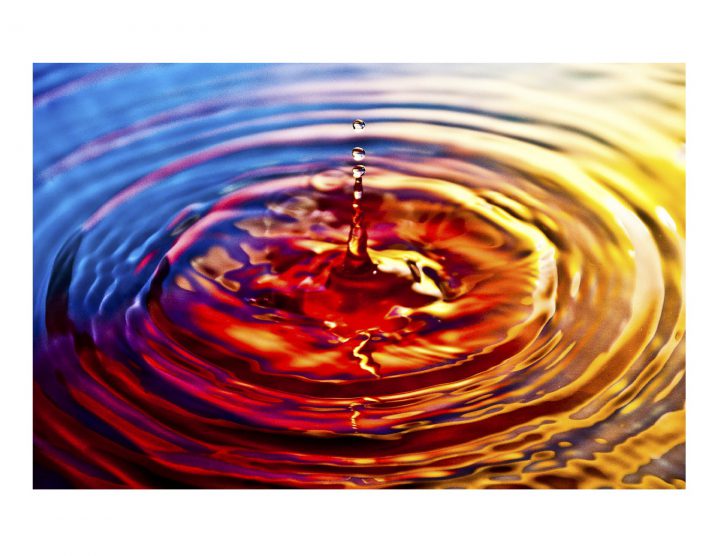
As referenced in a previous post, the Food Solutions New England 21 Day Racial Equity Habit Building Challenge wrapped up about a month ago. This was the fourth offering of the Challenge, which was a remixed and enhanced virtual network form of an exercise created by Dr. Eddie Moore (founder of the Privilege Institute) and Debbie Irving (author of Waking Up White). A small design team of which I am a part originally saw the potential of using the Challenge to invite more widespread conversation about the connection between race, racism and sustainable food systems and ultimately greater action for racial justice. No one presumed that the Challenge in and of itself would be sufficient, but rather saw it as a way of creating “network effects” around the work that many are already doing in our region.
And there is evidence that there have been impacts happening as a result. Participation in the Challenge has grown from 200 to 3,000 from 2015 to 2018. This year the Challenge was launched, in a sense, at the Wallace Center’s National Good Food Network Conference in Albuquerque, New Mexico (gratitude to the Center’s staff for the invitation to do so!). We have heard stories since the beginning that various groups in the region and increasingly around the country have participated in the Challenge and invited others to do so, including Farm to Institution New England, Iowa State University Extension, The Interdependence Project, and The Fellowship of Intentional Community. Read More
May 17, 2018
“Only connect! That was the whole of her sermon. Only connect the prose and the passion, and both will be exalted, and human love will be seen at its height. Live in fragments no longer.”
E.M. Forster, from Howard’s End
This is an excerpt from the final post in a series of five focused on networks for change in education and learning that have appeared on the Education Week and Next Generation Learning Challenges websites.
In this series on network design and network thinking, I explored the power and promise of networks as residing in how connection and flow contribute to life, liveliness and learning. See, especially, Connection is Fundamental.
In Why Linking Matters, I looked at how certain networks can more optimally create what are known as “network effects,” including small world reach, rapid dissemination, resilience, and adaptation.
I also noted, in Structure Matters in particular, that living systems–including classrooms, schools, school districts, and communities–are rooted in patterns of connection and flow. That’s why shifts in connections–between people, groups, and institutions–as well as flows of various kinds of resources can equate with systemic change, and ideally they can lead to greater health (in other words, equity, prosperity, sustainability).
Networks can also deliver myriad benefits to individual participants, including: inspiration; mutual support; learning and skill development; greater access to information, funding, and other resources; greater systemic or contextual awareness; breaking out of isolation and being a part of something larger; amplification of one’s voice and efforts; and new partnerships and joint projects.
It’s also true, however, that not every network or network activity creates all of these effects and outcomes. The last two posts looked at two factors that contribute to whether networks are able to deliver robust value to individual participants and the whole, including network structure and what form leadership takes. Networks are by no means a panacea to social and environmental issues and can easily replicate and exacerbate social inequities and environmentally extractive practice. So values certainly have a place, as does paying close attention to dynamics of power and privilege.
It is also the case that individual and collective behavior on a day-to-day basis have a lot to say about what networks are able to create. The following is a list of 25 behaviors for you to consider as part of your network practice as an educator:
- Weave connections and close triangles to create more intricacy in the network. Closing triangles means introducing people to one another, as opposed to networking for one’s own self, essentially a mesh or distributed structure rather than a hub-and-spoke structure.
- Create connections across boundaries/dimensions of difference. Invite and promote diversity in the network, which can contribute to resilience and innovation.
- Promote and pay attention to equity throughout the network. Equity here includes ensuring everyone has access to the resources and opportunities that can improve the quality of life and learning. Equity impact assessments are one helpful tool on this front.
- Name and work with power dynamics and unearned privilege in the direction of equity.
- Be aware of how implicit bias impacts your thinking and actions in the network. Become familiar with and practice de-biasing strategies.
- Think, learn, and work out loud, in the company of others or through virtual means. This contributes to the abundance of resources and learning in the network.
- Don’t hoard or be a bottleneck. Keep information and other resources flowing in the network.
- Identify and articulate your own needs and share them with others. Making requests can bring a network to life as people generally like to be helpful!
- Stay curious and ask questions; inquire of others to draw out common values, explicit and tacit knowledge, and other assets.
- Make ongoing generous offers to others, including services, information, connections.
For behaviors 11-25, see this link.
“… Keep reaching out, keep bringing in./This is how we are going to live for a long time: not always,/for every gardener knows that after the digging, after/the planting, after the long season of tending and growth, the harvest comes.”
Marge Piercy, from “The Seven of Pentacles”
May 14, 2018
 On April 22nd, the fourth annual 21 Day Racial Equity Habit Building Challenge wrapped up. This project with Food Solutions New England was originally conceived as a “network innovation” to spread and deepen the conversation about and commitment around addressing race and racism in food and related systems. This year the organizing team sought to go deeper, noting how much the national conversation has evolved in the past year. And we were heartened by the numbers (over 3,000 people from all 50 states and parts of Canada signed up) and by the quality of the conversation on-line and in different in-person venues where we met people who were participating. Certainly no one is under the illusion that the Challenge is enough, but we have heard that it is changing the way many see their work in food systems. Below you will find some of what was generously offered on-line in response to the daily email prompts and associated resources (readings, videos, audio clips).
On April 22nd, the fourth annual 21 Day Racial Equity Habit Building Challenge wrapped up. This project with Food Solutions New England was originally conceived as a “network innovation” to spread and deepen the conversation about and commitment around addressing race and racism in food and related systems. This year the organizing team sought to go deeper, noting how much the national conversation has evolved in the past year. And we were heartened by the numbers (over 3,000 people from all 50 states and parts of Canada signed up) and by the quality of the conversation on-line and in different in-person venues where we met people who were participating. Certainly no one is under the illusion that the Challenge is enough, but we have heard that it is changing the way many see their work in food systems. Below you will find some of what was generously offered on-line in response to the daily email prompts and associated resources (readings, videos, audio clips).
History of Race and Racism in the Food System: What is the history you hold in your head (and heart and body) about our current food systems?
“In my work at a non profit in the ‘good food’ movement, we constantly use language like ‘fix the broken food system.’ Reading these pieces on the historical underpinnings of racism in our food system illuminated for me just how much that statement (almost a throw away now) is situated within a racial caste system. To presume that ‘we’ must ‘fix’ a system ignores (by not naming) the racism present in that system. It lumps the goals of racial and food justice in with other, non-racialized issues (like soil health) also plaguing our current system, thereby continuing to perpetuate injustice through silence.”
“The consistent glorification of a food system, broken or fixed, imagined or real, that has systematically ignored the people that make it function, throughout the past and yet still in the present, is something I think I unknowingly participate in. Will naming this, calling it out, help us to change the structural racism that fuels this reality? How? I hope that by learning, studying, reflecting, and communicating that this group can indeed be somehow change-making, but it’s challenging to see a positive horizon when the change to be had is so large and primarily resides in legal, political and social institutions and structures. Forgive me for being still inside a state of feeling overwhelmed.”
The Colonization of Indigenous Land Rights and Food Ways: How does colonization continue to exist in our food systems and how can you support decolonization and celebrate indigenous rights and food ways?
“I just finished listening to The True History & Foods of Thanksgiving. My immediate reaction is shock and shame. I accepted Thanksgiving as an American celebration without ever wondering about its history. The podcast is a great conversation that educated me about how interwoven food, land, location, spirituality and culture are for some traditions within Native Americans. I wish we treated our lands and environment with the same care that many people were able to do before they were colonized.”
“In my state, treaties still continue to be broken with Native American communities, the most recent agreement being broken in 2015. State programs aimed to “help” are rooted in white supremacist ideologies. I think of Audrey Lorde when she declared, “For the master’s tools will never dismantle the master’s house. They may allow us to temporarily beat him at his own game, but they will never enable us to bring about genuine change. Racism and homophobia are real conditions of all our lives in this place and time. I urge each one of us here to reach down into that deep place of knowledge inside herself and touch that terror and loathing of any difference that lives here. See whose face it wears. Then the personal as the political can begin to illuminate all our choices.”
Read More
April 16, 2018

At Passover, there is a song about being thankful for each thing we are blessed with. Dayenu means “it would have been enough.” It is a call to appreciate the small things and to recognize that they are enough. And yet, within the “enough” there is a simultaneous recognition that the first gift or step is not enough without the next one.
In a world where racism is rampant, and where the impacts are real – often deadly, even – is there an “enough” in terms of being collaborators for change? It feels like it is never enough when lives are at stake.
On the one hand, there is never enough until we have envisioned and called into being the liberated and equitable and pleasing community that allows us all to thrive. This reality requires a commitment that is bone deep. It is the kind of commitment that requires constant thinking and action to live into new ways. It is held knowing that upending racism and racist systems is something to die for.
On the other hand, each action, each change to the individual and to the system, needs to be celebrated. For that one moment, it is enough. As long as we know that a new moment emerges when more is needed, and the past action is certainly no longer enough.
What is the first step and what is the next one? For many white people striving to be collaborators, the work begins with learning and knowing and then shifting awareness, then teaching, then ultimately embodied anti-racism practice in relationship with other white people and people of color. Perhaps a move from external to internal; from pointing out the faults of others to seeing how, despite best intentions, we are each implicated in racist systems; from tight vigilance to looser living and correcting.
- Reading books and learning by black artists and intellectuals who have created parts of the world we want Dayenu
- Understanding the history of racism and how it got institutionalized in the US and globally Dayenu
- Bringing a new consciousness to my actions as I walk through the world Dayenu
- Naming racism in all-white spaces Dayenu
- Building authentic relationship across difference Dayenu
- Helping other white people along the journey through openness and kindness Dayenu
- Showing up as a vulnerable person who can acknowledge my mistakes and own my racism Dayenu
- Ongoing learning through books, workshops, conversation, community Dayenu
- Contributing to and investing in multi-racial community at work and at home Dayenu
- Putting my life on the line Dayenu
The work of a white ally or accomplice is never ending, to be sure. It requires a lot of effort. And yet, it should not be a slog. We are doing this for ourselves as much as for anyone else. We recognize that ending white privilege and white supremacy allows us to be full human beings as we disrupt the notion of superiority on which this country was founded.
In my work in trainings and coaching, I encourage both the ongoing effort and the need to celebrate.
Maybe this is one way to be gentle and joyful in our work for liberation – to celebrate each small step as if it were enough while also knowing that it is never enough until we are all free and that we need to want and to create more.
What does it mean to you to do equity work with both insistence and gentleness, step by step?
“Ours is not the task of fixing the entire world all at once, but of stretching out to mend the part of the world that is within our reach… What is needed for dramatic change is an accumulation of acts, adding, adding to, adding more, continuing.” – Clarissa Pinkola Estes
April 13, 2018

Everything grows.
Everything changes.
And you will be undone forever.
Pursuing racial equity and systems change is a forever equation. I am noticing that our clients and friends believe that if we just implement racial equity, diversity, and inclusion “the right way,” our organizations, movements, and networks will immediately become effective multiracial ecosystems that produce transformative results.
We will always be undone. People and systems – the very world we live in – are ever changing and reverting and that’s why I have to be honest that the work of racial equity will always be unfinished.
People are always coming in and out of our organizations, some with knowledge of our path to create racial justice and others completely unknowing and beginning the discovery of systemic racism. Even if we root out systems of injustice and racism in specific institutions or sectors, they will exist in other places and invariably slip back into our ecosystem. The world is encased in racial stratification. We can dismantle racism in one territory and it can spread elsewhere as people and their ideas travel.
Oppression cannot be fixed. It’s not a linear proposition. It swarms, grows, gets attacked at moments, dissipates, and then finds its way back into our systems as fearful ways of thinking and unproductive ways of doing. And because we are a species and planet dependent on each other, the chronic patterns of racism can reenter our minds and societies. We are imperfect people in deeply imperfect systems.
We are making progress but it’s not the kind where there’s a clear end in sight. We’re learning together. We’re trying new practices of shared power. We’re rooting out racist policies in our laws and organizations. Our systems are feeling the pressure because of our joint actions.
But we won’t do it “right” and we won’t get it “right.” We will be undone.
But don’t let this disappointment get in the way of persistent bold action.
We will have moments of clarity. Moments of seeing new possibilities. Months of progress in our leadership for equity and justice. Years of growth and learning. Examples of power shifting and sharing all around us. Detrimental laws defeated. It will feel like freedom, like less damage is around and inside of us.
Let’s see ourselves as equilibrium makers, re-introducing people to see the problem of racism once again, re-balancing power as the dynamics return, re-calibrating systems when they revert, revisiting change in ourselves and others with humility, and re-birthing our best nature and ideas toward liberation.
Each of us are needed to extricate the roots of racism. We can still be a constant catalyst for change all the while knowing that we will be undone.




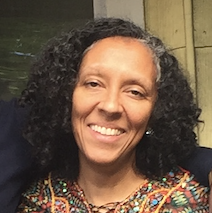



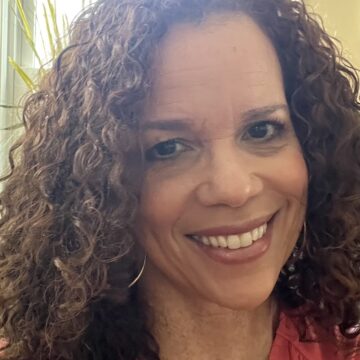



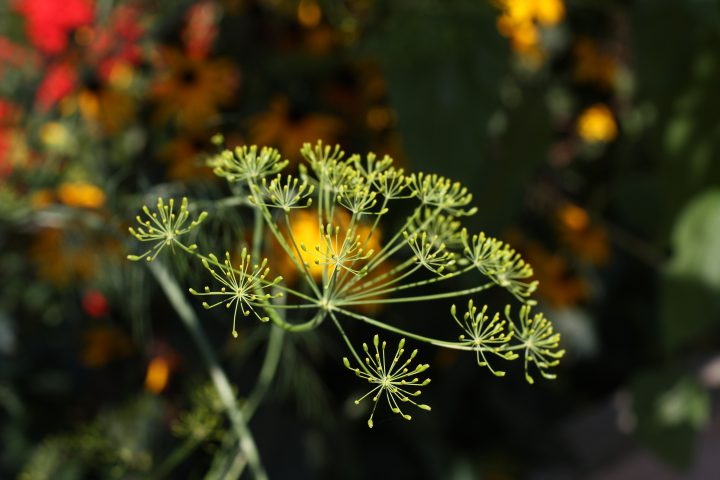
 On April 22nd, the fourth annual
On April 22nd, the fourth annual 